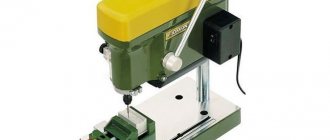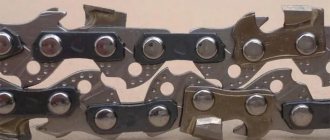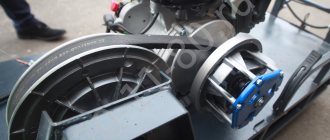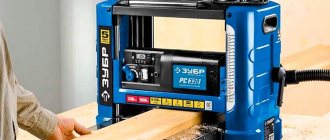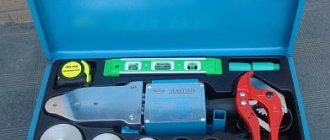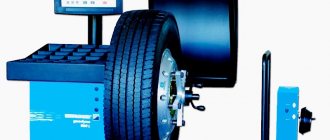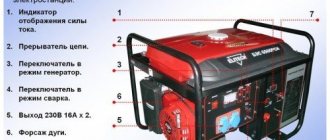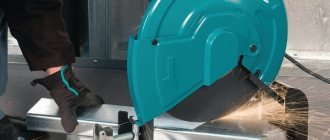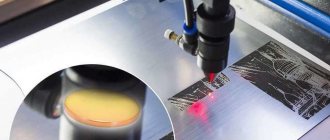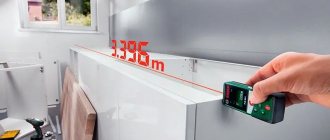| Place | Name | Characteristics in the rating |
| The best inexpensive budget drilling machines |
| 1 | Einhell BT-BD 501 | Best tabletop drill |
| 2 | Jet JDP-8L | Highest quality build |
| 3 | Caliber SS-13/400A | High precision and accuracy |
| 4 | RedVerg RD-4113 | Optimal combination of price and quality |
| 5 | Nexttool ВСС-13 | Best price |
| The best mid-range drilling machines |
| 1 | Bosch PBD 40 | The most efficient machine in the category |
| 2 | Elitech STS 5525VPL | Better functionality. Smooth rotation speed adjustment. |
| 3 | BISON ZSS-550 | Precise drilling, horizontal movement |
| 4 | Einhell BT-BD 701 | High quality workmanship |
| 5 | Ryobi RDP102L | The most reliable machine |
| The best premium drilling machines |
| 1 | Dewalt Dwe1622k | LED backlight, high performance |
| 2 | MESSER MDM-32 | High power, integrated coolant tank |
| 3 | JET IDP-15BV 230V | Smooth speed control |
| 4 | Euroboor ECO 100/4 D | Best machine for drilling large holes |
| 5 | PROMA BY-3216PC/400 | High resistance to continuous use. Longest service life |
A drilling machine is needed not only in manufacturing plants. In the home workshop, repair shops and garages - wherever there is a need for high precision in carrying out this type of work, which is completely impossible to carry out without a special machine.
Our review presents the best models available on the Russian market. For the convenience of the reader, the rating was divided into several categories according to the cost (and, accordingly, the quality level and functionality) of the models. The evaluation component was defined as a combination of technical characteristics and existing positive experience in operating the equipment by different consumers.
Designation
Drilling equipment is divided into models according to the table of metal-cutting machines. Each model is unique and has a corresponding name, consisting of a set of numbers and letters.
The first number indicates belonging to a specific group of machines, 2 – drilling group. The second number indicates the type of machine. The third and fourth digits indicate an important parameter for the machine, that is, the maximum diameter of the hole being machined.
If there is a letter between the first and second numbers, then it indicates the modernization of the original machine. The letter at the end speaks of the creation of a machine different from the original based on the main model.
Let's look at a few examples:
- 2118 – vertical drilling machine, achievable hole diameter – 18 mm.
- 2N118 – vertical drilling machine, achievable hole diameter – 18 mm, modernized;
- 2N118A - vertical drilling machine, achievable hole diameter is 18 mm, the letter A indicates the automation of the machine.
Development of route technology for manufacturing drills from R6M5F3 steel
1. Receipt of workpieces - forgings (forging shop).
. Preliminary softening heat treatment - isothermal annealing (thermal section of the forge shop).
. Hardness control (thermal section of the forge shop).
. Pre-machining (machining shop)
. Final hardening heat treatment - hardening with stepwise heating, high-temperature triple tempering; improvement of the shank (thermal section of the machine shop).
. Hardness control (thermal section of the machine shop).
. Final machining (machine shop).
. Quality control of the finished part (mechanical shop).
Development of route technology for manufacturing a cutting tool tap made of R6M5 steel:
1. Receipt of workpieces - forgings (forging shop).
. Preliminary softening heat treatment - isothermal annealing (thermal section of the forge shop).
. Hardness control (thermal section of the forge shop).
. Pre-machining (machining shop)
. Final hardening heat treatment - hardening with stepwise heating, high-temperature triple tempering; improvement of the shank (thermal section of the machine shop).
. Hardness control (thermal section of the machine shop).
. Final machining (machine shop).
. Quality control of the finished part (mechanical shop).
Development of a technological process for heat treatment of cutting tools:
Technological process of preliminary heat treatment
Preliminary heat treatment of cutting tools (disc cutter, drill, broach) is carried out in a chamber electric furnace type SNO8.16.5/10. The oven has ribbon heating elements arranged in zigzags in two rows along the side walls, on the oven floor and on the roof. Bottom heating elements are placed on special alundum combs and protected by massive metal heat-resistant tiles with side ribs or carborundum film. The ends of the heaters are brought out to the rear wall and protected by a casing. The furnace damper has a tube with a number of holes for supplying protective gas.
) reduce carbide heterogeneity of cast and rolled steel;
) reduce hardness and thus ensure the possibility of cutting;
) prepare the structure for hardening and prevent naphthalene fracture.
For isothermal annealing, the steel is heated to a temperature 20-30 ° C above A3 and, after holding, quickly cooled to a temperature slightly below the critical point A1 - 700 ° C. At this temperature, the steel is maintained until the austenite completely disintegrates and is then cooled in air.
The advantage of isothermal annealing compared to conventional annealing is a significant reduction in annealing time and obtaining a more uniform structure. The isothermal holding temperature affects the resulting structure and properties. With a decrease in the isothermal holding temperature, i.e. With an increase in the degree of overcooling of austenite, the cementite grains are crushed and fine-grained pearlite is obtained.
Annealing is carried out in an electric furnace type SNO 8.16.5/10, which, in terms of its productivity, ensures the implementation of the production program and the required temperature range of the heat treatment mode.
) Preliminary heat treatment and assignment of technological parameters for a disk cutter.
first heating of the tool in an electric gas furnace type SNO8.16.5/10 to a temperature of 650°C. Heating duration is 20-25 minutes. Holding at heating temperature for 20-30 minutes.
second heating of the tool to a temperature of 920°C. Heating duration is 20-25 minutes. Holding at heating temperature for 1 hour.
cooling in oven to 500°C
air cooling to site temperature
hardness control of 10% of workpieces from a batch using the Brinell method
control of heat treatment mode.
A characteristic feature of annealing tungsten-free high-speed steel is the formation of a ferrite-cementite mixture from austenite at a constant temperature. When 11M5F steel is heated above the critical point, a transition of pearlite to austenite occurs. The mechanism of the process of transformation of pearlite into austenite consists in the nucleation of austenite grains and their growth. When heated slightly above the critical point A1, the initial austenite nuclei are formed by shear (α → γ) while maintaining coherence. As the nucleus grows, the coherence of the α and γ lattices is disrupted, the shear mechanism is replaced by a normal growth mechanism, and the austenite grains acquire an equiaxial shape. Isothermal exposure is necessary for complete decomposition of austenite and the formation of pearlite.
) Preliminary heat treatment and assignment of technological parameters for the drill.
heating is carried out in an electric chamber furnace type SNO8.16.5/10 to a temperature of 840-860°C. Heating duration »5 min. Holding at heating temperature for 10 minutes.
cooling in the oven to 720-730°C and holding for 2 hours
cooling in the oven to 600°C
air cooling to site temperature
hardness testing using the Brinell method
control of heat treatment mode.
heating in an electric chamber furnace type SNO8.16.5/10 to a temperature of 840°C±10°C. Holding at heating temperature for 20 minutes.
air cooling to site temperature
hardness testing using the Brinell method
control of heat treatment mode.
) Preliminary heat treatment and assignment of technological parameters for the tap
heating is carried out in an electric chamber furnace type SNO8.16.5/10 to a temperature of 840-860°C. Heating duration »5 min. Holding at heating temperature for 10 minutes.
cooling in the oven to 720-730°C and holding for 2 hours
cooling in the oven to 600°C
air cooling to site temperature
hardness testing using the Brinell method
control of heat treatment mode.
heating in an electric chamber furnace type SNO8.16.5/10 to a temperature of 840°C±10°C. Holding at heating temperature for 20 minutes.
air cooling to site temperature
hardness testing using the Brinell method
control of heat treatment mode.
General conditions for choosing a drainage system: The drainage system is selected depending on the nature of the protected area.
Organization of surface water flow: The largest amount of moisture on the globe evaporates from the surface of the seas and oceans (88‰).
Mechanical retention of earth masses: Mechanical retention of earth masses on a slope is provided by buttress structures of various designs.
The best types of premium drilling machines
This is already professional equipment designed to solve relatively complex problems, including mass production. To do this, it must be sufficiently reliable and efficient.
PROMA BY-3216PC/400
An interesting example from the Czech Republic, operating on a three-phase network and therefore intended mainly for factories, factories and other small businesses.
If there is no overload, it will last for many years. Peculiarities:
- rotation speed – 125-1975 rpm;
- maximum drill diameter – 32 mm;
- spindle pin stroke – 150 mm;
- dimensions – 1060x640x1510 mm
- weight – 260 kg;
- engine power – 1500 W;
Advantages:
- reinforced base 310x380 provides an additional work table;
- the sieve protects the operator from chips;
- has lighting and cooling;
- up to 8 speeds.
- With automatic feeding;
flaws:
- Not suitable for household use;
- Requires 380 volts.
Euroboor ECO 100/4 D
Possibly the best vertical metal drill, or at least one of them for sure.
Compact and very light for its class, but powerful, with spiral knives up to 32 mm in diameter and ring knives, it effectively solves a wide range of tasks up to 10 cm thick. It is also possible to process oversized parts. Operating parameters:
- rotation speed – 42-620 rpm; engine power – 1900 W;
- engine power – 1900 W
- weight – 28 kg
- dimensions – 365x190x510 mm.
Advantages:
- The base rotates - in the longitudinal direction by 20 0 and in the angular direction by 30 0;
- 4 speeds;
- powerful magnet with a magnetic force of 3 tons for perfect fixation;
- can also be installed on large objects.
Flaws:
- Too expensive for home use.
JET IDP-15BV 230V
American made table drill for professional use, ideal for quickly cutting holes in cast iron and steel.
It can be powered from the mains, which expands the range of its applications. The manufacturer provides a 2-year warranty on all its models. Peculiarities:
- Rotation speed – 450-2000 rpm;
- Maximum drill diameter – 20 mm;
- Spindle pitch – 85 mm;
- dimensions – 1780x425x214 mm.
- weight – 50 kg;
- engine power – 750-1100 W;
Advantages:
- a transparent plastic screen protects against sparks, dust, and shavings;
- Durable 73mm support tube effectively absorbs vibrations;
- Adjustment is carried out as smoothly as possible thanks to the control board;
- The table can rotate around the column either counterclockwise or clockwise.
Flaws:
- Relatively high wear.
MESSER MDM-32
Powerful, self-adjusting, easy to learn and easy to operate, this machine from South Korea exemplifies modern performance.
Options:
- Speed – 100-830 rpm;
- Engine power – 1550 W;
- Weight – 15 kg;
- Dimensions – 300x280x480 mm.
Pros:
- buttons and knobs within operator reach;
- relatively deep penetration of the tool – up to 55 mm;
- There is a reservoir for coolant.
Cons:
- Only 1 speed.
Dewalt Dwe1622k
A true leader among our best bench drills for the home, garage, and industry.
Since it can be used anywhere, it is quite compact and can be powered from a 220-230 volt network without any problems. Equipped with a magnet, it holds the workpiece securely. Without heating the workpiece, it ensures fast processing. Peculiarities:
- rotation speed – 350-450 rpm; engine power – 1200 W;
- engine power – 1200 W;
- maximum drill diameter – 50 mm;
- weight – 14.55 kg.
Advantages:
- there is an automatic supply of coolant;
- LED lighting allows you to work even in the dark;
- it is protected against overvoltage;
- After an emergency shutdown, it does not restart when power is restored.
Flaws:
- One of the most expensive models.
Types of drills used
The vast majority of mini drilling machines are used to make holes in printed circuit boards, which are made of fiberglass. Conventional drills become dull very quickly when working with such material; they are enough to process no more than a hundred holes. It is not possible to sharpen miniature drills, given the very small diameter of such a tool. The solution is to use drills made of carbide materials that interact well with fiberglass laminate.
Micro drills for making small diameter holes
Microdrills made of carbide materials, the diameter of which can vary in the range of 0.5–2 mm, are capable of withstanding several thousand drilling cycles without losing their geometric parameters. However, such a tool should be protected from significant lateral loads, which could cause it to break.
The short video below will help you decide on the choice of drills for a miniature drilling machine.
Tips for choosing
Please note the following points:
- Processed material. There is no need to buy equipment with huge capacities for drilling wood or plastics.
- Machine type. Select the machine according to the processing you need. Why do you need an expensive multi-spindle machine if you need to drill identical small holes?
